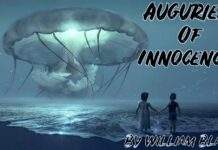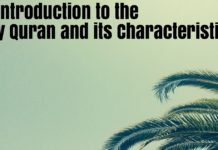Critical Appreciation of “Chaucer” By Ted.
INTRODUCTION
While talking in one of his interviews about influences on his poetry, Hughes said:
“…. One poet I have read more than any of these is Chaucer.”
Being an admirer of Chaucer’s poetic art; Hughes in this poem, “Chaucer”, comes out with defence against criticism from conservative and conventional critics on Chaucer’s unique handling of thought and metre. The self-styled criticism from less scholarly and less knowledgeable writers whom Hughes calls ‘cows’, irritates him.
Hughes says that the shower from the spring sky of Chaucer’s verse has washed clean and fresh all bush and plant of the hold and heath and brought an emerald verdure to it. This part of the poem is all about newness of poetic art of Chaucer. Chaucer’s contribution to English language and art of versification brought a new life. His experiment with metre and language heralds the advent of modern poetry with realistic approach.
Hughes spurns all unguarded comment and does not mind even a strong reaction from critics who chew on cud and love to keep to the beaten path and feel scared of the virtue of change. Hughes is satisfied with the pace with which the people are becoming familiar with Chaucer.


Critical Appreciation of “Chaucer” By Ted
The poem ‘Chaucer’ by Ted Hughes is a defense he puts up against criticism on Chaucer’s poetic art from critics with a hatred for new trends in language and poetry introduced by Chaucer. They ask what new Chaucer ‘brought with his April sweet shower’ to ‘the drought of March’. Hughes comes out with an answer that Chaucer’s spring sky brought a shower that washed all wild plants of its dirt and pollution and gave it a new look and life.
Chaucer distilled a unique pure spirit from this spring yield of new flowers! Hughes refers to a new blend of language and verse woven into an amazingly patterned poetic tapestry by the unmatched skill and insight of Chaucer. Hughes calls such critics ‘cows’ as they are slaves to the habit of chewing on cud of old thought. They remain shut to the new breeze.
Hughes refers to their animal instinct that attracts them to sensual beauty of nature. He can guess about their probable reaction, in case they are denied their favourite ‘fodder’.
Hughes with his like-minded fellow poets goes about at a slow pace introducing Chaucer’s great work of poetic art to the people giving a hoot to the hostile comment of less scholarly critics and to the objection of sham critics.
The irregular verse in ‘Chaucer’ is peculiar to Hughes’ poetic art. Like many of his poems, he makes use of the device of run-on-line. In this case, the opening line reaches as far as the seventh line of the poem. Rhythmic flow and beat is of course there, but it all offers a prose-like verse. Words are simple except a coinage of ‘Cexdamation’, and a technical term ‘sostenuto’. The metaphor, ‘cow’, walks along the reader till the poem ends making all cows of the group angry when shooed away from their fad.
Humour of Hughes lies in his choosing manner of cows for the thoughtless critic, their habit of impulse to be attracted by desire to sex, and food and their shard, and strong reaction to check on the liberal use of commodities of their animal taste. We trace the use of anthropomorphism by the poet when the cows react like critics. The watch approaches and appreciates Chaucer. They have human reactions like someone interested in something particular. Their joy and anger are both human and animal-a sweet blend, of course.





























